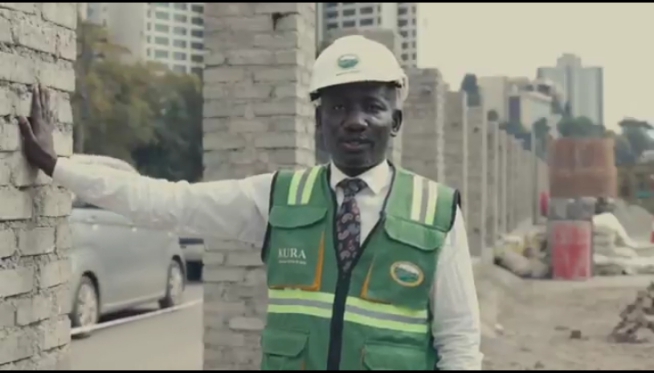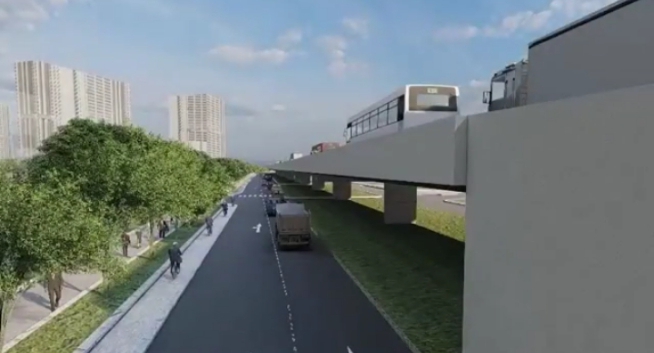
 KURA's Engineer Benjamin Asin at the construction site/COURTESY
KURA's Engineer Benjamin Asin at the construction site/COURTESY The Kenya Urban Roads Authority (KURA) has playfully responded to growing curiosity over strange structures sprouting along Kenyatta Avenue.
This is after some Nairobi residents joked that they looked like “roadside apartments.”
In a post, KURA has assured the public that there is no rogue real estate project underway.
“Mnauliza nani anajenga nyumba Kenyatta Avenue? Aje sasa watu wangu? Tunajenga viaduct,” the agency said.
Explaining about the ongoing works, Engineer Benjamin Asin stated that the structures are temporary hoardings, protective walls meant to shield motorists and pedestrians as heavy machinery rolls in to construct a new viaduct connecting Valley Road to Kenyatta Avenue.
"I have seen many questions. I just want to clarify that these are not houses. We are simply creating a safe working space. This is a high-traffic area, and the machinery we are using demands serious protection,” said Asin.
The hoardings mark the beginning of a major infrastructure upgrade, the construction of a viaduct linking Valley Road to Kenyatta Avenue.
The elevated road will help decongest one of Nairobi’s busiest corridors by allowing through-traffic to bypass junctions, cutting down on delays caused by gridlock.
"This is a very active and busy area. The viaduct needs heavy machinery, and we need very reliable protection while we build,” added Asin.
The response by KURA follows a flurry of memes, jokes, and speculations online.
Many Kenyans have humorously speculated that the structures looked like makeshift housing or modern.
A viaduct is a long, elevated structure built to carry a road or railway over obstacles such as valleys, rivers, other roads, or dense urban areas.
It typically consists of a series of tall supports or pillars that hold up a continuous deck, allowing vehicles or trains to pass smoothly above whatever lies beneath.
Unlike a typical bridge that crosses a single point like a river, a viaduct often stretches over a wide area and is designed to maintain a gentle slope, making it ideal for steady traffic flow.
 An artistic impression of the Kenyatta Avenue overpass once complete/COURTESY
An artistic impression of the Kenyatta Avenue overpass once complete/COURTESY The main purpose of a viaduct is to reduce congestion and improve connectivity by separating traffic levels.
It allows vehicles to move uninterrupted over busy junctions or ground-level infrastructure.
In essence, it is like a flyover but on a much larger scale, helping to ease movement in crowded or complicated transport zones.
In the case of the Kenyatta Avenue project in Nairobi, the viaduct being constructed will link Valley Road directly to Kenyatta Avenue, enabling vehicles to pass over the usual bottlenecks and junctions.
This is expected to significantly reduce gridlock in the area and create a more efficient traffic flow through the city.
The project, which was initially scheduled for completion in 2023, stalled due to funding challenges. KURA plans to complete the project by October 2025.
The project will feature a dual carriageway stretching approximately 7 kilometres, complete with adjoining road networks and two overpasses.
KURA has also revealed it has incorporated cycle lanes and walkways in the project.











